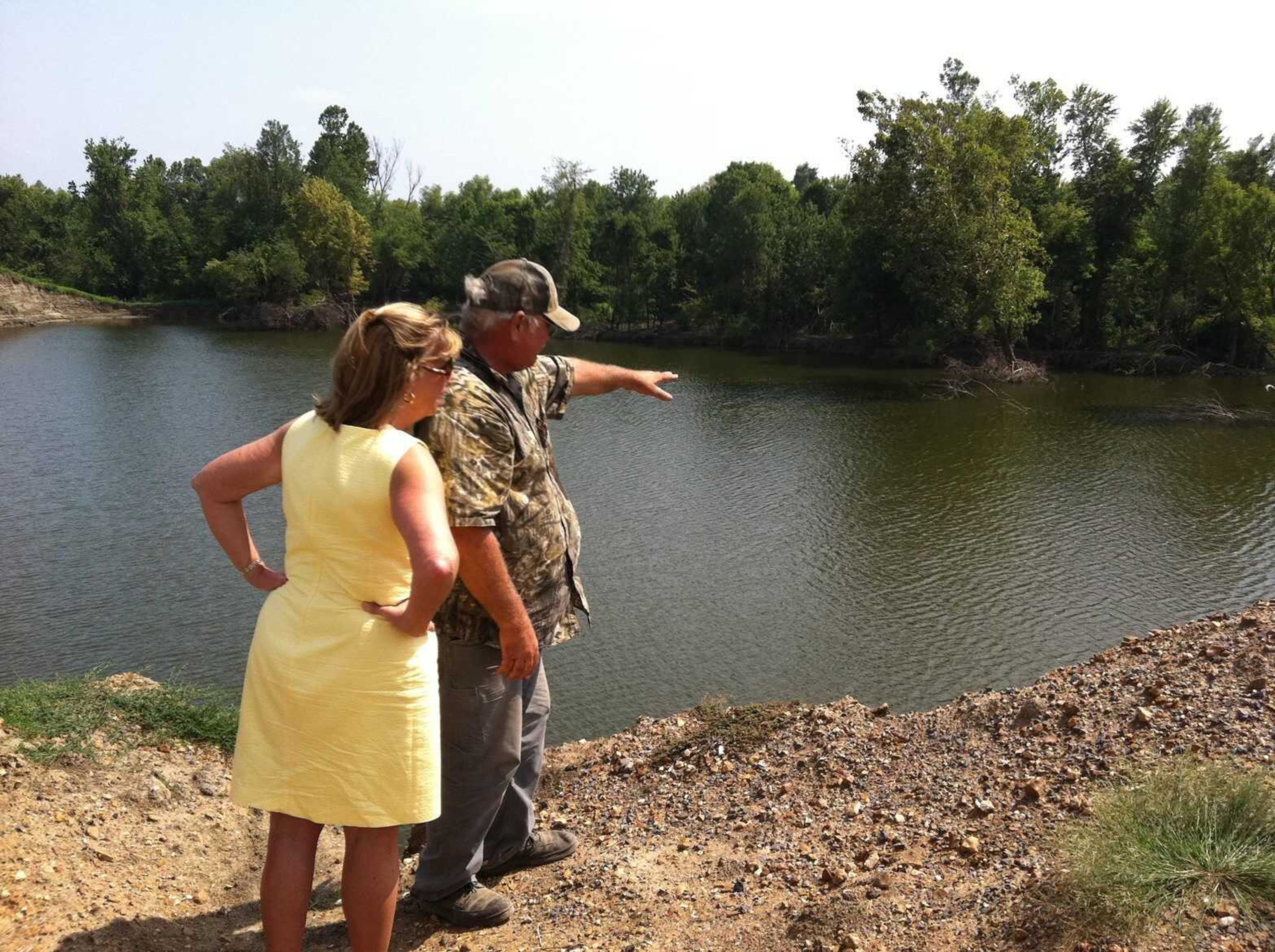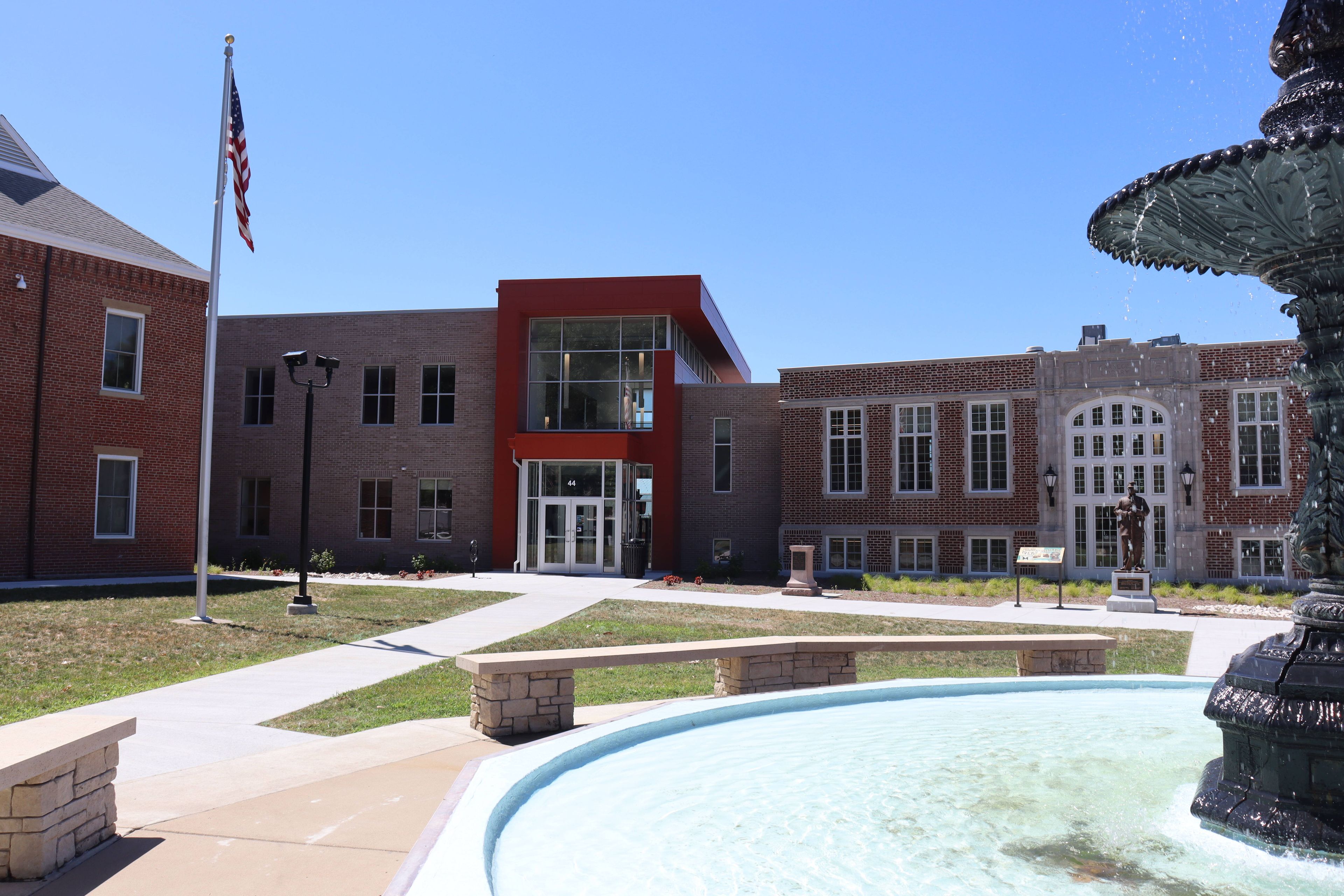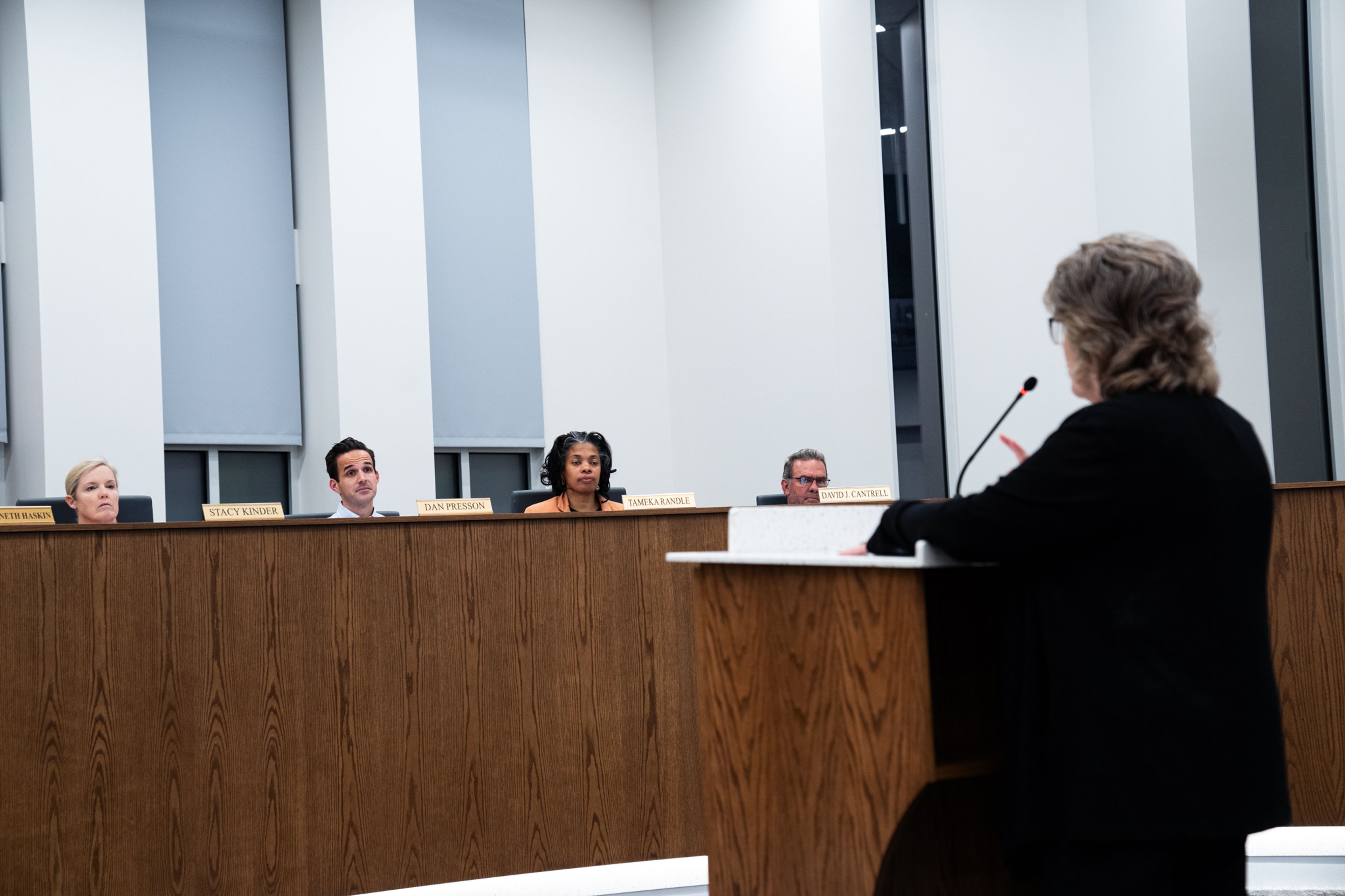Corps too slow in repairing levee, Emerson says
WYATT, Mo. -- The heavy equipment pushing dirt along the Birds Point-New Madrid Floodway was a welcome sight to Rep. Jo Ann Emerson, who toured the area Saturday.
WYATT, Mo. -- The heavy equipment pushing dirt along the Birds Point-New Madrid Floodway was a welcome sight to Rep. Jo Ann Emerson, who toured the area Saturday.
But the U.S. Army Corps of Engineers' work to rebuild the breached levee isn't progressing fast enough for her or the farmers whose vulnerable crops are now growing just behind it.
"It's very frustrating because the corps said 'This is our top priority. We're going to build a temporary levee,'" Emerson said. "I realize there is some preliminary work that has to get done, but they're not moving fast enough."
On Saturday, at the site of the first levee breach near Wyatt, about 14 men and nearly a dozen pieces of earth-moving equipment worked on the foundation for a new levee.
In one spot, crews dug out mud so it could be replaced with dry earth. In another, a tractor pumped water out of a deep crater created by the explosives used to breach the levee. Portions of the levee near the blast site that remain intact are being torn out so they can be rebuilt. The soil has been fractured and won't hold like it did before the breach, Emerson said.
Willie Vandergriff, construction site manager for the corps, said crews are working with the dirt already available near the site but will have to bring in more dirt from off-site.
Emerson, a Cape Girardeau Republican, said she intended to discuss her observations about the floodway with corps officials Monday.
The corps deadline for the construction of a temporary 51-foot levee is November. That levee should serve as a basis for a permanent levee scheduled to be completed in March.
Emerson said the timetable is realistic and the corps has the funds it needs to rebuild the levee to the condition it was in before the breach.
"The corps broke it. The corps has got to fix it," she said.
Thursday on the House floor, Emerson defended a billion-dollar increase in federal funds for repair and reconstruction of Mississippi River levees damaged in this spring's floods. The funding is included in an amendment to the House Energy and Water Appropriations Act of 2012.
The bill is awaiting a Senate vote.
"Until we have repairs and restoration, we cannot get started on our full recovery," Emerson said.
The provision includes $573 million for repairs along the Mississippi River.
"It's a kind of down payment for the work all the way down to New Orleans so that the corps can get started even faster," Emerson said.
In addition to that emergency appropriation, Emerson said the corps has a few billion undesignated dollars in its operations, maintenance and construction fund, a portion of which could be used for repairs in Southeast Missouri.
On July 12, the House Appropriations Committee approved an amendment by Emerson to keep the Environmental Protection Agency from designating new wetlands in counties recovering from floods this year.
At Milus Gary Wallace's farm off County Road 520, a 100-foot-wide and 50-foot-deep hole where his soybean field used to be is still full of water. The topsoil around the hole has washed away and in its place is seven feet of sand littered with river rocks. His farm is at the site of the middle levee breach, the third detonation by the corps. A few weeks ago, when the Mississippi River was rising again, the corps built a six-foot "ring levee" to encircle the hole and keep rising waters from flooding the field again.
In addition to the levee repairs, drainage ditches in the floodway also need work. Many were silted in completely, while others were widened by rushing waters.
Glen Ault, of Consolidated Drainage District No. 1 in Mississippi County, showed Emerson Ditch No. 29 off County Road 310, which is now six times wider in spots than it was before the levee breach.
Damage to ditches in Mississippi County is estimated at about $3.8 million, Ault said. His district has the equipment and the manpower to make the repairs but not the funds. He said he hopes funding will come from the U.S. Department of Agriculture's Natural Resources Conservation Service.
mmiller@semissourian.com
388-3646
Connect with the Southeast Missourian Newsroom:
For corrections to this story or other insights for the editor, click here. To submit a letter to the editor, click here. To learn about the Southeast Missourian’s AI Policy, click here.











